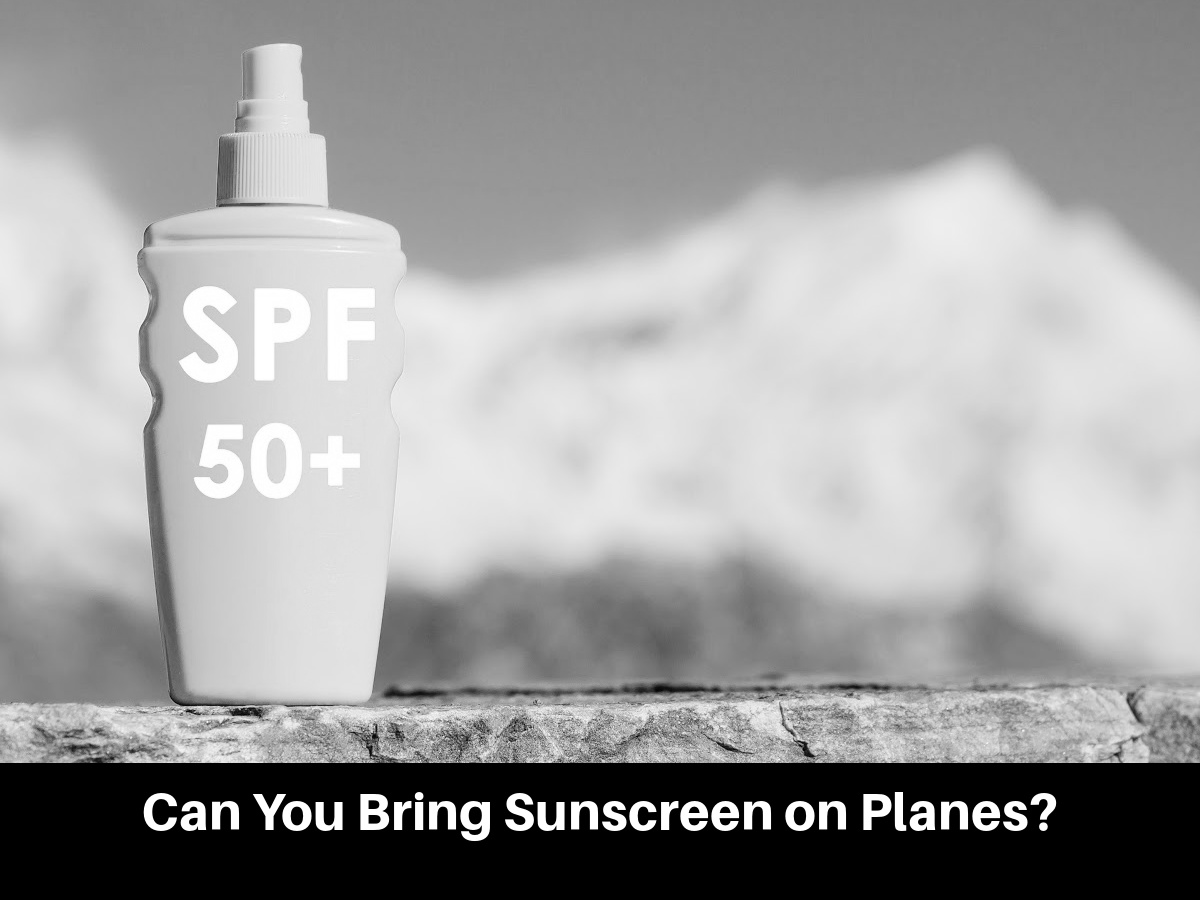You’re allowed to pack sunscreen in your luggage. But there are many different types of sunscreen, and each one has different rules that you need to follow.

Liquid Sunscreen
TSA (Transport Security Agency) treats lotion, gel, paste, cream, and roll-on sunscreen as liquids, so the 3-1-1 rule for liquids in hand baggage applies.
In hand luggage, liquid sunscreen is limited to 3.4 oz (100 ml) bottles or smaller. Passengers must pack them together with all their other liquids inside a 1-quart, resealable bag of toiletries.
In checked baggage, there aren’t any quantity or size restrictions for sunscreen.
Aerosol Sunscreen
Spray sunscreen in aerosol bottles follows the same rules when packed in hand baggage – they must be in 3.4 oz containers or smaller.
But in checked baggage, more rules apply because aerosols contain flammable gases. The FAA limits all aerosols and other flammable or oxidizing toiletries to 500 g (17 fl oz) bottles or smaller. And the total amount of hazardous toiletries is limited to 2 kg (68 oz) per passenger.
Solid Sunscreen Sticks
Sunscreen sticks, like stick deodorants or chapstick, and treated as solids by airport security. This means that solid sunscreen sticks don’t have any size or quantity restrictions in hand and checked baggage.
Medically Necessary Sunscreen
If you have a skin condition that requires you to apply sunscreen regularly, previously you were allowed to carry larger amounts of sunscreen in your hand baggage. But in 2021, TSA reversed this rule, and now all sunscreen, even prescription sunscreen, has to be in 3.4 oz (100 ml) bottles or smaller. Only in checked baggage larger quantities are allowed.
Traveling With Sunscreen Internationally
The rules for traveling with sunscreen are generally identical all across the world with a few exceptions.
On domestic flights in Australia and New Zealand, the 3-1-1 rule doesn’t apply because they have newer 3D scanners. This means that you can bring large sunscreen bottles in your hand baggage on these flights. Some UK and US airports are also equipped with these new scanners.
If you’re flying through Asia, you should remember that aerosol sunscreen may be banned from checked baggage. That’s because generally, the rules for flammable items are stricter there.
If you’re flying to Hawaii, some types of sunscreen are banned to protect the coral reefs. Sunscreen containing oxybenzone and octinoxate is completely prohibited there. But you should also avoid sunscreen that contains petrolatum or high content of Titanium Dioxide. If you can’t find a coral reef-friendly sunscreen, you can always buy a sunscreen bottle when you land. That’s because harmful sunscreen can’t be sold in Hawaii under the law.
How to Pack Sunscreen in Your Luggage
It doesn’t matter whether you pack your sunscreen in hand or checked baggage. But if you want to bring a large bottle, then you’re only allowed to pack it in your checked bag.
To avoid spillage, put some tape over the lid and place the bottle inside a resealable Ziploc bag. You should also place your sunscreen somewhere in the middle of your bag so that other objects don’t press on it and cause the cap to open and make a mess.
And lastly, you don’t need to worry about aerosol sunscreen exploding. Checked luggage compartments on planes are pressurized. This means that the conditions are similar to the passenger part of the airplane, and aerosols won’t explode.
Half-Empty Sunscreen Bottles Are Treated as Full-Size
Unfortunately, you can’t pack a half-empty 6 oz sunscreen bottle in your hand baggage. That’s because TSA agents always check the markings on bottles that look oversized. And even if they’re half-empty, there’s no way of telling how much liquid is inside.
One option that you can do is to transfer sunscreen from a large bottle into a few smaller ones. You can buy travel-sized liquid containers, and then transfer your sunscreen there. To do this, place both bottles next to each other with both openings facing one another and then press the full bottle into the empty one.
Rules for Traveling With Other Skin Care Products
- Lip balm and deodorant: They’re both treated as solid items so they don’t have any packing restrictions.
- Aftersun cream, tanning oils, etc: The rules for these products are identical to liquid sunscreen.
Summing Up: Traveling With Sunscreen
Traveling with stick sunscreen is the best option for traveling. That’s because there aren’t any packing restrictions for it, it can’t spill, it’s small, and it lasts for longer. Some people also find it easier to apply compared to getting their hands dirty with lotions and creams.
But if you’re low on space, you can always buy sunscreen at your destination. Sunscreen is usually available in pretty much any pharmacy store. It also isn’t very expensive, so you can throw it out when you’re done.
